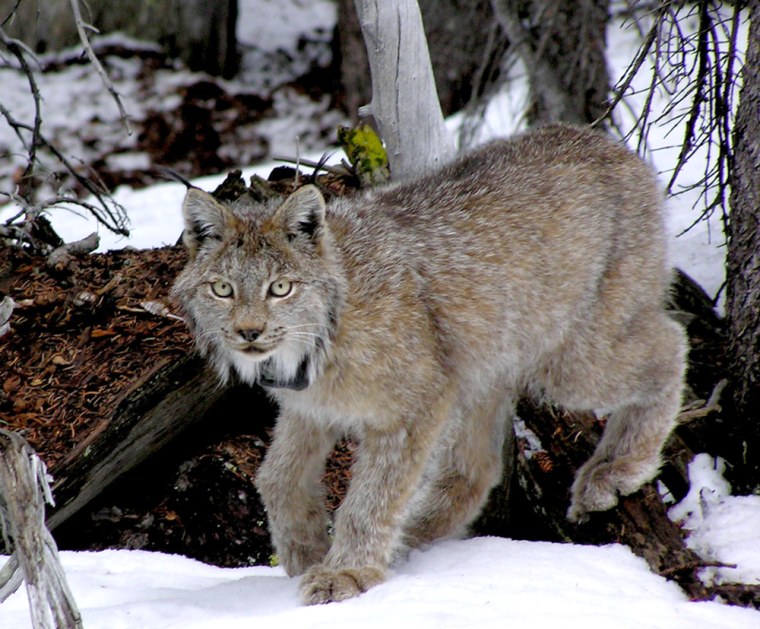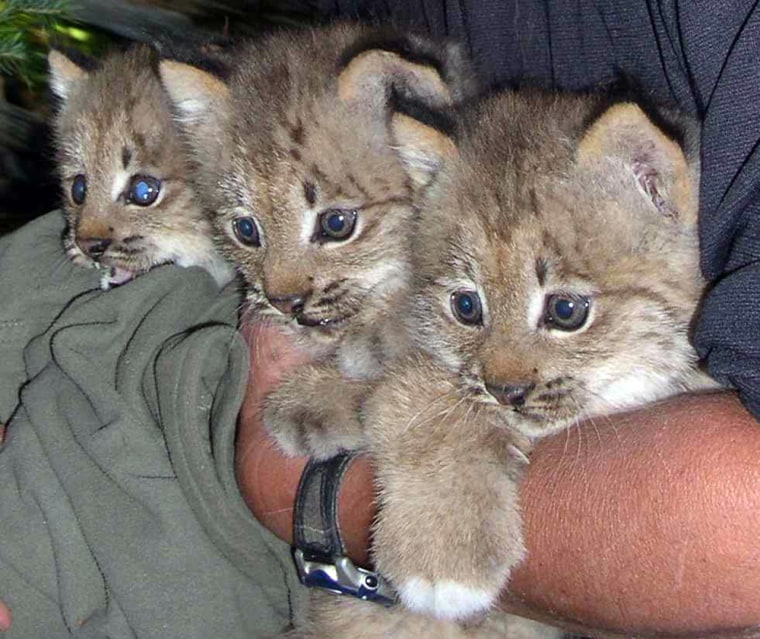Volunteers opened the metal animal crate in a campground here. A lynx, its footsteps soundless, sprinted from a nest of hay and vanished into the snowy Weminuche wilderness, its fur a perfect match for the winter-deadened landscape.
Researchers released four Canada lynx early this month, another step in a reintroduction program started in 1999. Biologists hope lynx being reintroduced will repopulate a species considered endangered in Colorado and threatened in 47 other states.
The Colorado Division of Wildlife plans to complete the release of 218 Canada lynx to the San Juan Mountains by the end of April. While the reintroduction program cannot be classified as successful yet, researchers said there is definite progress.
Lynx, brown and gray wild cats similar to bobcats, weigh between 18 and 44 pounds, and have tufted ears. Their broad paws -- a trademark feature -- act as natural snowshoes and help them move through the winter landscape. Trackers describe the cats as shy, elusive animals who enjoy living in dark timber.
But the rarity of lynx sightings in Colorado is not a consequence of their reclusive nature. In 1973, the division reports, someone killed the last known lynx in Colorado.
Researchers have not identified why the cat became extinct within the region, said Tanya Schenk, lead field researcher for the reintroduction project. She and others suspect that many were killed when ranchers tried to control predators through poison, and that new development shrank their habitat.
Many people worried the reintroduction program would fail because no one knew why the lynx disappeared, said Schenk. The agency started the program anyway, and believes research may answer some of the lynx's mysteries.
Early mistakes
Fears about the program were not unfounded, she added. It nearly failed in the beginning because researchers did not know enough about lynx and released them at inappropriate times. The cats were let go shortly after trackers trapped them in Canada, she said, and most starved to death.
The trip stressed the lynx, she said, and researchers freed them into the wilderness earlier in the winter, when prey populations had not yet peaked. The original release site was located near a highway, Schenk added, and many lynx died because cars hit them.

Learning from mistakes has made the reintroduction program much more successful, Schenk said. For instance, they now fatten up the lynx for three months in a holding area near Del Norte, Colo.
By measuring population growth, researchers can see improvement. For example, the agency knows at least 105 kittens were born in the last three years and that natural reproduction is beginning to offset natural and accidental deaths.
If the lynx continue breeding, releases will not be necessary much longer, said Schenk. The division planned to release a total of 14 cats this month, and will continue with releases through 2008. Then it will assess whether more cats are needed to bolster the population.
To date, she said, "Every year, we still need some more."
Satellite collars used
The division fits every cat they release with a satellite collar so researchers can track the animals and learn when they have died. Additionally, the track device allows researchers to locate the dens and count litters, Schenk said.
The agency also fitted five Colorado-born lynx with collars and hopes to learn this spring if the cats are breeding, an indication the lynx can survive without further releases.
The lynx are now released at a campground an hour outside South Fork, where snowy mountain cliffs stretch high. Crates are opened one by one, allowing each cat the chance to disappear into the forest silently before the next follows.
"They lived up to their billing," said Mark Sorensen, 65, a resident of North Platte, Neb., who drove down specifically to see what he called a once-in-a-lifetime opportunity. He regretted only their quick disappearance into the trees.
